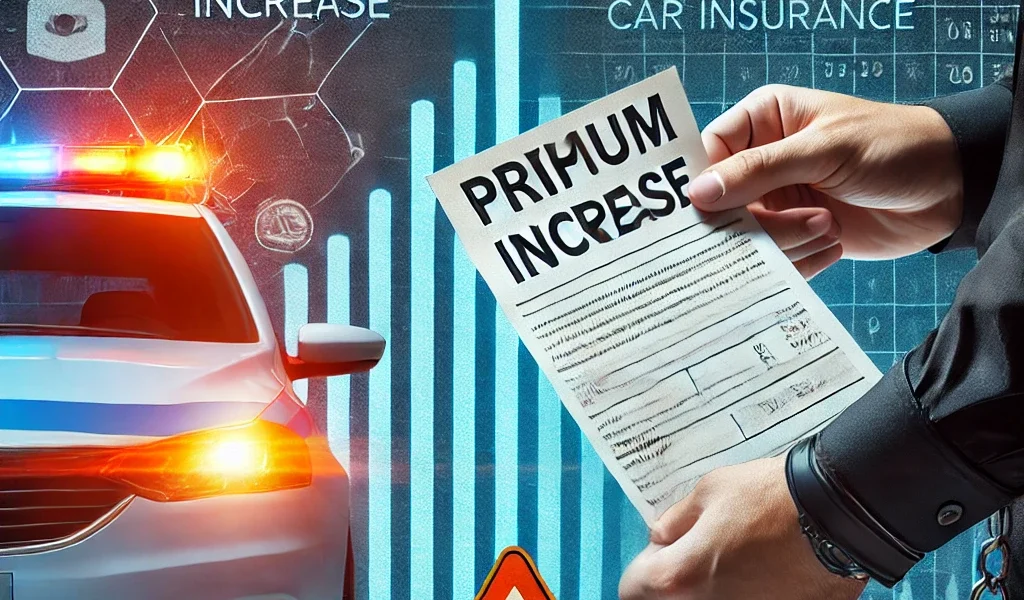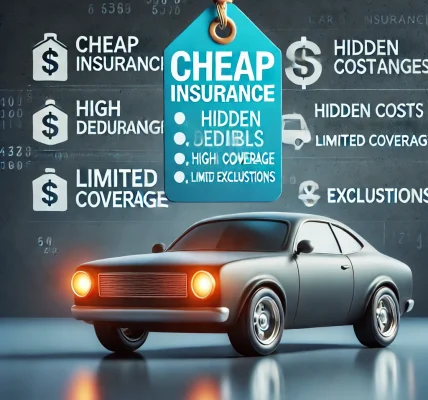Traffic violations can have a significant impact on your car insurance premiums. Whether it’s a minor speeding ticket or a serious offense like reckless driving, insurers consider these violations as indicators of risk. The more violations you have, the higher your insurance costs can be. Understanding how different infractions affect your premium can help you make better driving decisions and keep your insurance rates under control.
In this article, we’ll explore how traffic violations influence your car insurance, the most common offenses that raise premiums, and tips to mitigate their impact.
Why Do Traffic Violations Affect Car Insurance Rates?
Insurance companies assess risk when determining your premium. When you commit a traffic violation, you signal to insurers that you may be a higher-risk driver, which increases the likelihood of accidents and claims. As a result, insurers adjust your premium accordingly to reflect this increased risk.
How Insurers Assess Risk
- Severity of the Violation – More severe infractions (e.g., DUI, reckless driving) lead to greater premium increases than minor ones (e.g., failure to signal).
- Frequency of Violations – A single violation may not drastically impact your rates, but multiple infractions over a short period indicate a pattern of risky behavior.
- State Laws and Regulations – Insurance regulations vary by state, and some violations may have a greater impact depending on local laws.
- Insurance Company Policies – Different insurers weigh violations differently, so shopping around for quotes may help mitigate increases.
Common Traffic Violations and Their Impact on Insurance Premiums
Here are some common traffic violations and how they typically affect your insurance rates:
1. Speeding Tickets
- Impact: Moderate to high, depending on how much over the speed limit you were going.
- Typical Increase: 15% to 30% for minor speeding; 40%+ for excessive speeding.
2. Reckless Driving
- Impact: High, as this is considered dangerous behavior.
- Typical Increase: 50% or more.
- Examples: Swerving between lanes, excessive speeding, aggressive driving.
3. Driving Under the Influence (DUI/DWI)
- Impact: Extremely high, as DUI is a major offense.
- Typical Increase: 80% to 150% or more.
- Additional Consequences: License suspension, fines, mandatory high-risk insurance (SR-22).
4. Running a Red Light or Stop Sign
- Impact: Moderate, but can be severe if it leads to an accident.
- Typical Increase: 20% to 40%.
5. Distracted Driving (e.g., Using a Phone While Driving)
- Impact: High, as distracted driving is a leading cause of accidents.
- Typical Increase: 30% to 50%.
6. Driving Without Insurance
- Impact: Very high, as insurance companies consider uninsured drivers a major liability.
- Typical Increase: 50% to 100%.
- Additional Consequences: License suspension, fines, and difficulty obtaining coverage in the future.
7. At-Fault Accidents
- Impact: High, as insurance companies must cover damages caused by the driver.
- Typical Increase: 20% to 50% (higher for multiple accidents).
How Long Do Traffic Violations Affect Your Insurance?
Most traffic violations stay on your driving record for 3 to 5 years, depending on the severity and state regulations. However, serious offenses like DUI can remain on record for 10 years or more, affecting insurance rates for a longer period.
Insurance companies typically look at your driving record for the last 3 to 5 years when calculating premiums. Some insurers offer accident forgiveness programs, which prevent rate increases after a first-time minor violation.
Ways to Reduce the Impact of Traffic Violations on Your Insurance
If you’ve received a traffic violation, there are steps you can take to lessen its impact on your insurance premium:
1. Take a Defensive Driving Course
- Many insurers offer discounts if you complete an approved defensive driving or traffic school course.
- Some states allow drivers to remove points from their record by completing these courses.
2. Compare Insurance Quotes
- Different insurers weigh violations differently, so shopping around can help you find a better rate.
- Consider insurers that specialize in high-risk drivers if your record has multiple violations.
3. Maintain a Clean Driving Record
- Avoid additional violations by driving safely and obeying traffic laws.
- Over time, violations will be removed from your record, leading to lower premiums.
4. Increase Your Deductible
- Opting for a higher deductible can lower your overall premium, though you’ll pay more out of pocket in case of a claim.
5. Look for Discounts
- Many insurers offer discounts for bundling policies, low-mileage driving, and having safety features in your vehicle.
6. Consider Usage-Based Insurance (UBI)
- Some insurers offer telematics-based policies where premiums are based on actual driving behavior rather than past violations.
Conclusion
Traffic violations can have a significant impact on your car insurance premiums, with serious offenses like DUI and reckless driving leading to substantial increases. While most violations remain on your record for a few years, taking proactive steps like defensive driving courses, shopping for better rates, and maintaining safe driving habits can help minimize the financial impact.
By understanding how insurers assess risk and taking steps to improve your driving record, you can keep your car insurance premiums affordable while ensuring you have adequate coverage. Drive safely, obey traffic laws, and make informed decisions to protect both your driving record and your wallet.


